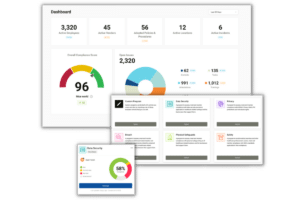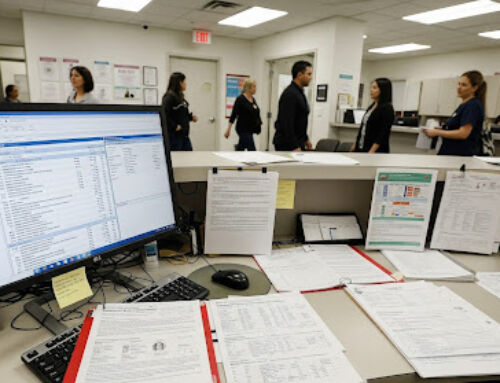
Many hospitals still manage risk with spreadsheets, email threads, and fragmented policy documents. But with healthcare being so complex, that approach just doesn’t cut it anymore. Regulatory pressure is increasing, and unfortunately, so are staffing shortages.
Modern hospital risk management requires more than reactive tracking. It needs a centralized and integrated platform that can flag issues early, help teams act quickly, and implement corrective action. Risk management software isn’t just helpful, it’s becoming essential.
Where Traditional Risk Management Falls Short
Most hospitals already handle risk management in some way, but when it’s done manually or across disconnected systems, it can end up causing more trouble than it’s worth. Incidents get logged late, sometimes with missing or incomplete details, and corrective actions get missed or may never be tracked to completion. Without centralized data, it’s hard to see any patterns forming or to know what needs attention and what’s actually improving. Even regulatory reporting becomes unnecessarily difficult, with teams spending days to consolidate information from multiple sources just to pass an inspection. It’s not that people aren’t trying; it’s because the systems in place weren’t built for how healthcare operates today.
What Risk Management Software Does
A hospital risk management platform addresses these gaps by bringing everything into one place and making the entire process easier. Instead of scattered logs and disconnected workflows, incidents can be captured as they happen, no matter which department they originate from. With the right system, root cause analyses and corrective actions are completed, they stay tied to the same record, making it clear what happened and how it was fixed. Each item can link directly to the policies, training, or audit logs it involves, so that there’s context instead of guesswork. Regulatory reports stop being an exhausting manual effort because the data is already there and ready to be pulled when needed. Even executives get a clear view through dashboards that highlight where the organization stands.
When compliance, HR, quality, safety, and IT are working from the same system, risk stops being a fire to put out and starts becoming something the hospital manages before it even sparks.
Why It Matters: Financial and Safety
A study published in the Journal of Patient Safety found that nearly 400,000 deaths every year are linked to preventable harm, and the cost of such harm in the U.S. is estimated to be more than $20 billion every year. That figure doesn’t take into account the ripple effects, like reputational damage, legal exposure, or the countless staff hours lost dealing with the fallout. That kind of damage doesn’t necessarily point to bad documentation, it points to entire systems that aren’t working the way they should.
At the same time, regulatory penalties are becoming steeper. A single HIPAA violation can be fined up to $50,000; CMS can reduce payments for avoidable conditions; other safety and privacy violations can accrue significant civil penalties. These numbers aren’t just risks on paper, they’re the real consequences of gaps that could have been managed sooner.
This is where risk management platforms can really make a difference. When systems work together, hospitals can address problems while they’re still small and keep them from growing into something that is costly and too big to manage.
Compliance Teams Need a Platform, Not Just a Binder
Compliance and risk management teams are often siloed from other departments. But a missed training in one area can lead to a policy failure in another.
With the right platform, compliance teams can:
- Assign risk ownership and track accountability
- Tie incidents directly to follow-up actions and deadlines
- Monitor vendor risk, credentialing, and exclusions
- Document ongoing oversight for audits and inspections
- Analyze patterns to focus on the highest-risk areas first
When compliance teams have a platform that pulls all of this together, they stop working independently and start integrating, making a true difference across the organization. Risks stay visible, responsibilities stay clear, and patterns no longer get buried under paperwork.
Data Is the Difference
Platforms, like the Compliancy Group’s with built-in analytics, help hospitals identify hotspots (repeat incidents, past due follow-ups, systemic errors) before they become liabilities. They make things much easier to navigate, and can even automate corrective action plans. Benchmarking across locations or departments is also important as it helps organizations focus efforts where they’ll make the most difference.
The point of using data in this way is not about generating more reports, it’s about giving teams the information they need to solve problems faster and prevent the same ones from happening again.
Why Choose the Compliancy Group
Not all systems are created equal. Good hospital risk management software should include:
- Incident tracking with real-time alerts
- Audit management and reporting tools
- Corrective action planning and escalation paths
- Integration with HR, policy, and training systems
- Analytics and customizable dashboards
- Vendor and third-party risk tracking
The goal isn’t just to check boxes, but to reduce complexity, increase visibility, and keep teams aligned in a way that works for them. Compliancy Group’s platform was built with that in mind. It doesn’t just collect data, it turns the data into something you can act on. Instead of leaving teams to chase documents or piece together reports, it gives them an easy way to see where risks stand and what’s being done. That is what makes the difference between managing risk on paper, and managing it in practice.
Final Thought
Hospitals aren’t lacking in awareness of risk, they’re just too often missing the infrastructure to manage it effectively. Risk management technology changes that.
By centralizing incident tracking, streamlining corrective actions, and tying risk to broader compliance and operational systems, these platforms give teams what they need to move faster, see farther, and respond smarter.









